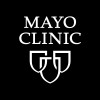
Effects of Blocking TSLP on Airway Inflammation and the Epithelial Immune-response to Exacerbation...
COPDCOPD Exacerbation3 moreA phase 2, multicentre, randomized, double-blind, placebo-controlled, parallel group study to evaluate the effect of tezepelumab on airway inflammation in patients with COPD.

TTI-622 and TTI-621 in Combination With Pembrolizumab for the Treatment of Relapsed or Refractory...
Recurrent ALK Positive Large B-Cell LymphomaRecurrent B-Cell Non-Hodgkin Lymphoma38 moreThis phase II trial tests the safety, side effects, and best dose of TTI-621 or TTI-622 in combination with pembrolizumab in treating patients with diffuse large B-Cell lymphoma that has come back (relapsed). TTI-621 and TTI-622 are called fusion proteins. A fusion protein includes two specialized proteins that are joined together. In TTI-621 and TTI-622, one of the proteins binds with other proteins found on the surface of certain cells that are part of the immune system. The other protein targets and blocks a protein called CD47. CD47 is present on cancer cells and is used by those cells to hide from the body's immune system. By blocking CD47, TTI-621 and TTI-622 may help the immune system find and destroy cancer cells. Pembrolizumab is a monoclonal antibody directed against human cell surface receptor PD-1 (programmed death-1 or programmed cell death-1) that works by helping the body's immune system attack the cancer and may interfere with the ability of cancer cells to grow and spread. Giving TTI-621 or TTI-622 in combination with pembrolizumab may kill more cancer cells in patients with relapsed or refractory diffuse large B-cell lymphoma.

Safety of Myeloablative Conditioning, Orca-T, and Allogeneic, Donor-Derived CD19/CD22-CAR (Chimeric...
Lymphoid LeukemiaTo assess the safety of administering allogenic, donor-derived CD19/CD22-CAR T cells that meet established release specifications in adults with B-cell ALL following a myeloablative conditioning regimen and Orca-T to determine if this will augment graft versus leukemia without increasing acute GVHD or graft failure.

Who Benefits Most From Cognitive Rehabilitation for Multiple Sclerosis?
Multiple SclerosisOver the last 20 years, there have been many studies investigating the efficacy of attention and memory rehabilitation for people with multiple sclerosis (MS) however, there appears to be a lack of conclusive evidence regarding the true effectiveness of this intervention. This could be because the participant samples recruited to these studies are often extremely varied in terms of socio-demographics and clinical characteristics, and it would be very unlikely that all people with MS would benefit from these interventions uniformly. Therefore, there is a need to explore which subgroups of people with MS benefit most from cognitive rehabilitation so that this information can be used to help clinicians and services make decisions as to whom this intervention is offered. Cognitive rehabilitation is not routinely provided on the NHS due to lack of resources. This research is important as it will allow these resources to be optimised and made available to those who need them, but also to allow clinicians to understand whether their patient is likely to benefit from cognitive rehabilitation before it is offered. The primary aim of this study is to assess the feasibility and acceptability of undertaking a randomised controlled trial (RCT) to investigate the effectiveness of an online group-based cognitive rehabilitation programme with specific groups of people with MS. The secondary aim is to understand the impact that this intervention may have on various aspects of cognition such as memory, attention, and information processing. This will be assessed through various questionnaires and objective neuropsychological tests. In addition, an algorithm has been developed following the secondary data analysis of a large RCT investigating group-based cognitive rehabilitation for people with MS. This algorithm may be able to determine who benefits most from cognitive rehabilitation, we will therefore use this as part of the data analysis to understand if the algorithm has the potential to be an accurate clinical prediction tool. After completion of the cognitive rehabilitation, a small number of participants in the intervention group will be invited to take part in feedback interviews to give their views on the feasibility and acceptability of the group-based online cognitive rehabilitation and provide any suggestions for improvements for future trials.

Safety and Efficacy of Anti-BCMA/GPRC5D CAR-T Cell Therapy in Treating Relapsed and Refractory Multiple...
Multiple MyelomaThis is an open label, single-arm, Phase 2 study to evaluate the efficacy and safety of Anti-BCMA/GPRC5D CAR-T in subjects with relapsed and refractory multiple myeloma. A leukapheresis procedure will be performed to manufacture Anti-BCMA/GPRC5D chimeric antigen receptor (CAR) modified T cells. Prior to Anti-BCMA/GPRC5D infusion subjects will receive lymphodepleting therapy with fludarabine and cyclophosphamide.

Enhancing Effect on Tumour Apoptosis With the Use of Pentoxifylline in Patients With Hodgkin Lymphoma...
Hodgkin LymphomaHodgkin's Lymphoma (HL) is a neoplasm that affects the lymph nodes and the lymphatic system. In Mexico, HL is the seventh most incident cancer and the ninth with the highest mortality. It is characterized by the presence of Reed-Sternberg (HRS) cells derived from B cells of the germinal center. They harbor mutations that activate the NF-κB pathway, favoring cell survival and their reprogramming. Currently, the available therapeutic options are chemotherapy and radiotherapy, achieving cure rates of 75% in patients in advanced stages, in which 70% of these are found at the time of diagnosis. The investigators proposed the use of pentoxifylline (PTX) as a therapeutic option to enhance the antitumor effect generated by the treatment since it can increase the efficacy of apoptosis, in vitro and in vivo, induced by doxorubicin, cisplatin, and adriamycin in human leukemic and cervical cancer cells, through inhibition of NF-κB by preventing phosphorylation of serine 32 of the inhibitor κB; it also decreases the expression of Bcl-2 and Bcl-XL, induces the releasement of cytochrome c and caspases 3, 9, and cleavage of caspase 8. The investigators evaluated the effects of PTX during the steroid window phase at induction to remission in pediatric patients with LLA of a recent diagnosis, where it was shown that the combined treatment of prednisone (PRD) with PTX achieves greater percentages of apoptosis compared to individual treatment. In addition, the effect of PTX on the expression of genes associated with apoptosis was evaluated; where it was shown that it activates the intrinsic and extrinsic pathways of apoptosis. Fortilin is a protein whose serum levels increase 2.4 times more after treatment with chemotherapy or radiotherapy in patients with malignancies, so it is considered a specific and sensitive biomarker of early apoptosis in vivo. The present protocol will evaluate the enhancing effect of PTX on tumor apoptosis in combination with chemotherapeutical agents in pediatric and AYA patients with HL. Apoptosis will be measured in vivo by quantifying serum levels of fortilin and cytochrome c in participants before and after treatment by ELISA; as well as an evaluation of the clinical response based on the results of the PET-Scan, overall and event-free survival according to the Kaplan-Meier curves, and the adverse effects associated with the use of PTX according to the common terminology criteria for adverse events and causality algorithms.

Orelabrutinib With R-CHOP-like Regimen for Patients With Newly Diagnosed Untreated Non-GCB DLBCL...
Diffuse Large B-Cell LymphomaThe purpose of this study is to evaluate the efficacy and safety of orelabrutinib combined with rituximab,followed by orelabrutinib combined with R-CHOP-like regimen for newly diagnosed untreated Non-GCB DLBCL Patients

MMF Versus CYC in the Induction Therapy of Pediatric Active Proliferative LN
Mycophenolate MofetilCyclophosphamide1 moreA prospective, randomized, multicenter, open-label, parallel-arm Study to compare effectiveness of mycophenolate mofetil versus cyclophosphamide in the Induction Therapy of pediatric patients with Active Proliferative Lupus Nephritis in Chinese population

Carfilzomib, Lenalidomide, and Dexamethasone Re-induction Followed by the 2nd ASCT in Multiple Myeloma...
Multiple MyelomaThe purpose of this study is to evaluate the efficacy and safety of salvage treatment with carfilzomib/lenalidomide/dexamethasone (KRD) followed by 2nd autologous stem cell transplantation (ASCT) and lenalidomide maintenance in patients with relapsed myeloma after 1st ASCT.

Etoposide+Cytarabine+PEG-rhG-CSF as First Line Mobilization Regimen of Hematopoietic Stem Cells...
LymphomaMultiple MyelomaThis is a single-arm, multicenter, exploratory clinical study to evaluate the safety and efficacy of the combination of etoposide, cytarabine and PEG-rhG-CSF (EAP regimen) as first line mobilization regimen of hematopoietic stem cells in patients with lymphoma and multiple myeloma. All eligible patients will receive EAP regimen treatment, then the number of CD34+ cells and white blood cells will be monitoring. When the collection standard is met, hematopoietic stem cell collection will be started.
